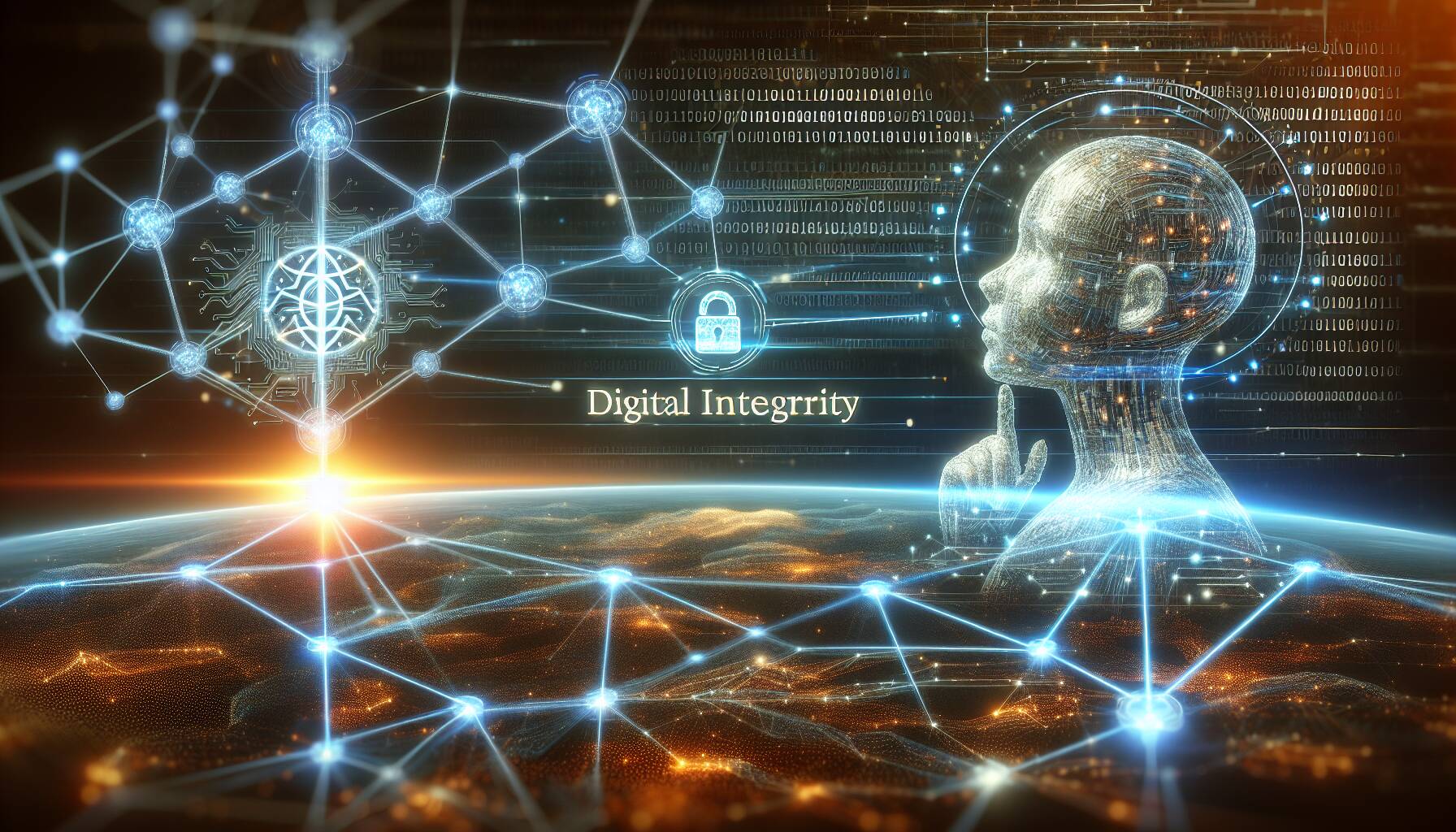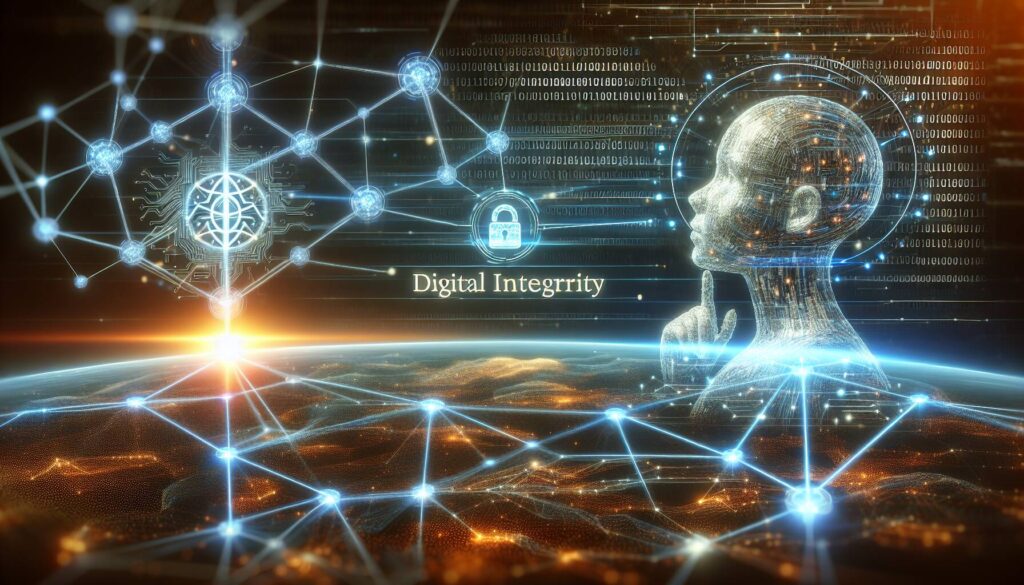As the technology landscape continues to evolve, the intersection of artificial intelligence (AI) and blockchain technology is raising important questions about digital authenticity and misinformation. Clara Tsao, an influential figure in this space, is at the forefront of these discussions, particularly regarding how we can navigate the complexities introduced by AI. With her impressive background as the co-founder of the Trust & Safety Professional Association and her role at the Filecoin Foundation, Tsao is uniquely positioned to drive important conversations about these challenges.
“For me, it’s always been about how do we bring more democracy to the web,” Tsao emphasizes, reflecting on her mission to create a more open internet. As misinformation spreads rapidly, especially during significant events like elections, distinguishing between genuine human-generated content and AI-generated material becomes increasingly crucial. The example she cites of Facebook dismantling media channels linked to foreign influence highlights the ongoing battle against misinformation and the need for reliable sources.
“AI is going to turbocharge everything that we see today, for good and for bad,” Tsao states, acknowledging the dual-edged sword that AI presents.
To combat these challenges, Filecoin is focused on harnessing the power of blockchain to create tamper-proof systems that ensure information integrity. This approach not only aims to preserve critical data but also seeks to verify its authenticity over time. Tsao cites the importance of decentralized storage, which allows for transparent tracking of how data is modified—a vital feature in maintaining the accuracy of information amid rising AI capabilities.
Through collaborations with nonprofit organizations, such as MuckRock, Filecoin is working to offer resilient storage solutions that can support journalists and researchers. Tsao notes that the implications of this technology extend beyond journalism; it could play a significant role in legal contexts, where the authenticity of evidence, such as war photographs, could be crucial in international courts.
As AI becomes more sophisticated, Tsao believes that solutions like those offered by Filecoin can aid in distinguishing between interactions with AI and real human connections, contributing to a more trusted digital ecosystem. “We can help verify if you’re talking to AI or a human,” she explains while emphasizing the need for affordable and accessible data storage options that empower individuals beyond the control of tech monopolies.
The dialogue around these themes will continue to unfold as Tsao takes the stage at the AI Summit at Consensus 2025, tackling the profound implications that AI and blockchain technologies could have on our society.

Understanding the Impacts of AI and Blockchain on Information Integrity
In this article, Clara Tsao discusses the complex interplay between AI, misinformation, and the need for digital authenticity. Here are the key points:
- AI and Misinformation
- The increasing ability of AI to generate realistic content raises concerns about distinguishing between human-generated and machine-generated information.
- Instances of AI being used for misinformation campaigns, such as historical events related to elections, highlight the potential risks to democratic processes.
- Importance of Digital Authenticity
- Filecoin employs blockchain technology to ensure the integrity and authenticity of digital content.
- Decentralized storage allows verification of data provenance, making it harder to manipulate information hidden from public scrutiny.
- Collaboration with Nonprofits
- Tsao’s work alongside organizations like MuckRock focuses on archiving and preserving critical information in a tamper-proof manner.
- Such collaborations facilitate greater transparency in journalism and help combat misinformation.
- Applications in Journalism and Law
- Using blockchain to verify photographs and data can provide evidence admissible in courts, especially in situations like war crimes investigations.
- This verification process strengthens the role of responsible journalism and mitigates the spread of fake news.
- Democratizing Access to Data
- Filecoin aims to reduce the costs associated with data storage, making it accessible for individuals and smaller organizations.
- This democratization helps prevent data monopolies and enables a more diverse landscape for AI training and applications.
“At the end of the day, I think everybody wants to know if they’re talking to an AI or to a human.” – Clara Tsao
AI, Blockchain, and the Fight Against Digital Misinformation: A New Frontier
The rapid advancement of artificial intelligence is increasingly drawing attention to the challenges of misinformation and digital authenticity. As individuals like Clara Tsao take center stage at events like the AI Summit at Consensus 2025, the discussion pivots toward the delicate balance between technological empowerment and potential pitfalls. With a focus on blockchain technology, Tsao’s approach seeks to establish a safer and more reliable internet. This leads us to explore the competitive landscape where both advantages and disadvantages play pivotal roles in shaping the future of information integrity.
Competitive Advantages: The partnership between blockchain and AI presents a formidable advantage in combating misinformation. By preserving data integrity through decentralized storage, platforms like Filecoin allow for verification of information over time. The ability to track how data changes not only supports journalists but also reinforces trust in various content types—from news articles to images taken during sensitive events like elections. This model empowers users and organizations by providing them with a tool that minimizes the risk of manipulation, thus ensuring that democratic processes are preserved.
Moreover, organizations such as MuckRock exemplify how collaboration can yield powerful solutions. By working alongside nonprofits, partnerships can enhance the resilience of critical information and make it more accessible to journalists and the general public, potentially preventing the reach of fake news. The emphasis on decentralization also democratizes data access, meaning that it’s no longer just monopolies that hold the keys to vast amounts of information; everyday users can participate in the data storage ecosystem.
Competitive Disadvantages: However, not all aspects of this new technological framework are without challenges. The complexity of blockchain technology can pose a barrier to entry for smaller organizations or users without technical expertise. Additionally, implementing such systems requires significant resources, making it difficult for less established players to compete. The processing of data on a blockchain can also lead to slower response times compared to traditional centralized systems, which could hinder real-time efforts to counter misinformation.
Furthermore, the same AI tools designed to enhance digital authenticity can potentially be manipulated by nefarious actors. The ease with which AI can generate realistic yet fake content leaves open the possibility for individuals to exploit these capabilities, thereby undermining the very solutions offered by blockchain technologies. This presents a unique double-edged sword—while blockchain can help verify authenticity, the pervasive nature of AI could further complicate these efforts.
In terms of who stands to benefit or suffer from these developments, stakeholders across the spectrum will experience varying impacts. Journalists, non-profit organizations, and democratic institutions may find newfound tools at their disposal for improving information accuracy and integrity. On the other hand, large corporations that historically controlled vast amounts of data might perceive blockchain’s decentralized nature as a threat to their business models. Similarly, bad actors may seek to exploit AI capabilities to further their agendas, complicating the landscape for those striving for a safer internet.

















